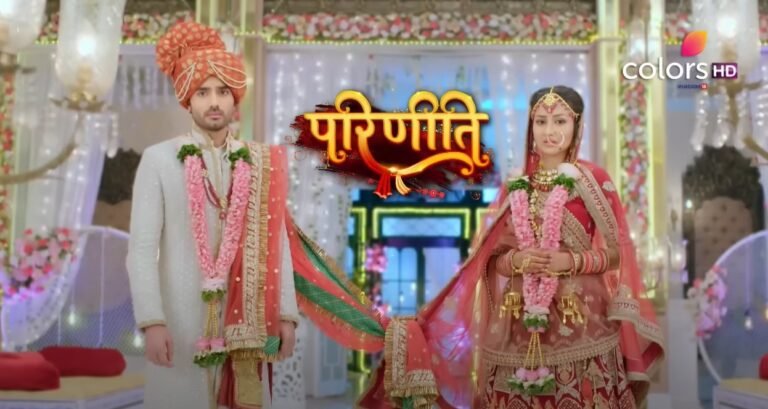Embark on a captivating journey through the resplendent world of Indian sarees. Delve into the rich tapestry of colors, fabrics, and craftsmanship that define the cultural heritage of this diverse nation.
From the opulent silk sarees of Maharashtra to the intricate handwoven wonders of Madhya Pradesh and the regal allure of Banarasi silk from Uttar Pradesh, these 15 different types of sarees in India will transport you to a realm of timeless elegance.
Prepare to be enthralled as we explore the intricate beauty and captivating stories behind each saree, accompanied by stunning photographs and their names.
Key Takeaways
- India has a rich diversity of sarees, with each region known for its unique style and craftsmanship.
- Sarees are made from various fabrics like silk, cotton, chiffon, and georgette, offering a wide range of options for different occasions and preferences.
- Traditional silk sarees like Paithani, Banarasi, Kanchipuram, and Mysore Silk are highly valued for their intricate designs and luxurious feel.
- Handwoven sarees like Chanderi, Sambalpuri, and Pochampally showcase the skill and artistry of weavers from different states.
Traditional Silk Sarees: Paithani Sarees From Maharashtra
The Paithani sarees from Maharashtra showcase intricate handwoven designs and vibrant colors, making them a cherished traditional silk saree among women in India. These sarees have a rich history and hold great significance in the Maharashtrian culture.
The art of weaving Paithani sarees dates back to the 200 BC era, where it was considered a symbol of royalty and worn by queens and noblewomen. The sarees are handcrafted using the finest silk threads and adorned with motifs inspired by nature, such as peacocks, flowers, and vines. The borders of the sarees are intricately woven with gold and silver threads, adding to their royal appeal.
Over the years, Paithani sarees have gained popularity among celebrities, with famous personalities like Vidya Balan, Aishwarya Rai Bachchan, and Deepika Padukone spotted donning these exquisite sarees at various events and occasions.
Traditional Silk Sarees: Banarasi Sarees From Uttar Pradesh
Exemplifying exquisite craftsmanship and timeless elegance, Banarasi Sarees from Uttar Pradesh are renowned for their intricate brocade work and luxurious silk fabric. These traditional silk sarees have a rich history and are considered a symbol of opulence and grace.
Here are four key features that make Banarasi Sarees stand out:
- Intricate Brocade Work: Banarasi Sarees are adorned with intricate designs created using the brocade weaving technique. These patterns often feature motifs inspired by Mughal art, floral motifs, and geometric designs.
- Luxurious Silk Fabric: Banarasi Sarees are made from pure silk, which gives them a lustrous texture and a beautiful drape. The silk used in these sarees is of the highest quality, making them a prized possession.
- Zari Work: Zari, which is gold and silver thread, is extensively used in Banarasi Sarees to create intricate patterns and borders. The zari work adds a touch of grandeur and makes these sarees perfect for special occasions.
- Traditional Designs: Banarasi Sarees often feature traditional designs like paisleys, butis, and jaal work. These designs have been passed down through generations and continue to be cherished for their timeless appeal.
Traditional Silk Sarees: Kanchipuram Sarees From Tamil Nadu
Renowned for their exquisite craftsmanship and timeless elegance, Kanchipuram Sarees from Tamil Nadu are a symbol of opulence and grace, exemplifying the rich cultural heritage of the region.
These sarees are the epitome of traditional elegance and craftsmanship, with their intricate designs and rich silk fabric. The allure of Kanchipuram sarees lies in the intricate motifs and patterns that are meticulously woven into the fabric by skilled artisans.
The silk used in the making of these sarees is sourced from the silk farms of Tamil Nadu, known for producing some of the finest silk in the country.
The vibrant colors, intricate zari work, and the perfect blend of tradition and innovation make Kanchipuram sarees a favorite choice for weddings, festivals, and other special occasions.
Traditional Silk Sarees: Mysore Silk Sarees From Karnataka
Originating from Karnataka, Mysore Silk Sarees are highly regarded for their exquisite craftsmanship and rich heritage, showcasing the cultural diversity of the region. These traditional silk sarees are known for their intricate designs and impeccable quality.
Here are four key points about Mysore Silk Sarees:
- Traditional Craftsmanship: Mysore Silk Sarees are handwoven by skilled artisans, using pure silk threads. The weaving technique involves intricate motifs and patterns, reflecting the traditional artistry of Karnataka.
- Rich Cultural Heritage: Mysore Silk Sarees have a long-standing history and are deeply rooted in the cultural heritage of Karnataka. They are often worn during festive occasions and weddings, symbolizing elegance and grace.
- Superior Quality: Mysore Silk Sarees are made from the finest quality silk, known for its lustrous texture and durability. The softness and sheen of the fabric make it a preferred choice among saree enthusiasts.
- Price Range: Mysore Silk Sarees are available in a wide price range, depending on the intricacy of the design, quality of silk, and craftsmanship involved. From affordable options to high-end designer sarees, there is something for every budget.
Handwoven Sarees: Chanderi Saree From Madhya Pradesh
Handwoven with precision and showcasing the exquisite craftsmanship of Madhya Pradesh, the Chanderi Saree seamlessly blends traditional artistry with modern elegance.
Named after the town of Chanderi in Madhya Pradesh, these sarees have a rich history dating back to the Vedic period. Known for their sheer texture and lightweight, Chanderi sarees are made using a unique blend of silk and cotton.
The intricate designs on Chanderi sarees often feature motifs inspired by nature, such as peacocks, flowers, and geometric patterns. The weaving process involves traditional techniques like the handloom and jacquard loom, resulting in beautiful and intricate patterns.
Chanderi sarees have gained popularity not only in India but also globally, making them a favorite choice for special occasions and celebrations.
Handwoven Sarees: Sambalpuri Saree From Odisha
One popular variant of handwoven sarees from Odisha is the exquisite Sambalpuri saree, known for its intricate craftsmanship and unique designs. These traditional Odisha handloom sarees are highly coveted for their rich cultural heritage and timeless elegance.
Here are some key features of Sambalpuri saree designs:
- Ikat Technique: Sambalpuri sarees are created using the intricate ikat technique, where the threads are resist-dyed before weaving, resulting in beautiful geometric patterns and motifs.
- Natural Dyes: The sarees are traditionally dyed using natural colors derived from plants and minerals, giving them a vibrant and eco-friendly appeal.
- Traditional Motifs: Sambalpuri sarees showcase a wide range of traditional motifs such as flowers, birds, animals, and human figures, representing the cultural significance and artistic prowess of the weavers.
- Handwoven Excellence: Each Sambalpuri saree is meticulously handwoven by skilled artisans, ensuring the highest quality and attention to detail.
With their timeless beauty and cultural significance, Sambalpuri sarees continue to be treasured as a symbol of Odisha's rich textile heritage.
Handwoven Sarees: Pochampally Saree From Telangana
With its vibrant colors and intricate patterns, the Pochampally saree from Telangana is a true testament to the mastery of handwoven textiles.
Known for its unique weaving techniques, the Pochampally saree is crafted using the 'ikat' method, where the threads are dyed before being woven, resulting in the characteristic blurred edges and geometric designs.
The colors and patterns of the Pochampally saree are a reflection of the rich cultural heritage of Telangana, with motifs inspired by nature, temples, and traditional art forms.
The saree often features bold and contrasting hues, such as red, yellow, green, and blue, creating a visually stunning effect.
Wearing a Pochampally saree not only showcases a woman's sense of style but also celebrates the artistic heritage of Telangana.
Tie-Dye Sarees: Bandhani Saree From Gujarat
Originating from the vibrant state of Gujarat, the Bandhani saree is a stunning example of tie-dye technique, known for its intricate patterns and vibrant colors.
Here are some discussion ideas regarding Bandhani sarees:
- Traditional tie dye techniques in Indian sarees: Bandhani vs Leheriya
- Bandhani: This technique involves tying small sections of the fabric with thread before dyeing, creating intricate patterns like dots, waves, and squares. The tied sections resist the dye, resulting in unique designs.
- Leheriya: Unlike Bandhani, Leheriya involves creating diagonal striped patterns by tying the fabric in a specific way before dyeing. The resulting sarees have vibrant and mesmerizing patterns.
- Exploring the cultural significance of Bandhani sarees in Gujarat
- Bandhani sarees hold immense cultural significance in Gujarat as they are a traditional attire for women during festivals, weddings, and other auspicious occasions.
- These sarees are believed to bring good luck and are considered a symbol of prosperity and fertility.
- Bandhani sarees also reflect the rich cultural heritage of Gujarat and are intricately woven by skilled artisans, preserving traditional techniques and craftsmanship.
Bandhani sarees are not only visually appealing but also represent the rich cultural heritage and traditions of Gujarat.
Tie-Dye Sarees: Leheriya Saree From Rajasthan
Exploring the vibrant Rajasthani culture, the Leheriya saree from Rajasthan showcases a mesmerizing tie-dye technique that creates beautiful wave-like patterns on the fabric. This traditional saree has gained popularity not only in India but also internationally, becoming a favorite among celebrities and fashion enthusiasts. The Leheriya saree has received numerous celebrity endorsements, with Bollywood actresses often seen donning this exquisite attire at red carpet events and weddings.
When it comes to styling tips, the Leheriya saree offers endless possibilities. It can be paired with a contrasting blouse to create a striking look, or with a matching blouse for a more traditional appeal. The saree's vibrant colors and unique patterns make it perfect for both casual and formal occasions. To complete the look, accessorize with statement jewelry and a sleek hairstyle.
Whether you're attending a wedding or a festive celebration, the Leheriya saree is sure to make you stand out with its timeless elegance and cultural significance.
Tie-Dye Sarees: Bomkai Saree From Odisha
The Bomkai saree from Odisha is a unique and culturally significant tie-dye saree that showcases intricate designs and vibrant colors. This traditional saree is handwoven by skilled artisans using traditional tie-dye techniques.
Here are some key features of Bomkai saree designs:
- Intricate Weaving: Bomkai sarees are known for their intricate weaving patterns, which include motifs inspired by nature, temple architecture, and tribal art.
- Vibrant Colors: These sarees are characterized by their vibrant color combinations, with contrasting hues creating a stunning visual appeal.
- Traditional Tie-Dye Techniques: Bomkai sarees are made using traditional tie-dye techniques like ikat and bandhni, where the threads are tied and dyed before weaving to create unique patterns.
- Cultural Significance: The Bomkai saree holds cultural significance in Odisha, representing the rich heritage and craftsmanship of the region.
With their exquisite designs and traditional craftsmanship, Bomkai sarees are a symbol of elegance and grace, making them a popular choice among women who appreciate traditional handwoven sarees.
Region-Specific Sarees: Ilkal Saree From Karnataka
Ilkal saree from Karnataka is a renowned regional saree that showcases the unique weaving techniques and vibrant colors of the region. These sarees are known for their distinctive weaving style, which involves interlocking warp and weft threads to create a reversible fabric.
The sarees are traditionally woven with a combination of silk and cotton, making them lightweight and comfortable to wear. Ilkal sarees often feature intricate motifs inspired by nature, such as peacocks, flowers, and geometric patterns.
In recent years, there has been a revival of interest in Ilkal sarees, with designers incorporating them into contemporary fashion trends. The sarees are now being styled with modern blouses and accessories, making them a popular choice for weddings and other special occasions.
Ilkal sarees have become a symbol of Karnataka's rich textile heritage and continue to be cherished for their timeless beauty.
Region-Specific Sarees: Chikankari Sarees From Uttar Pradesh
Chikankari sarees from Uttar Pradesh are exquisite handcrafted garments that showcase the intricate embroidery technique of chikankari, which involves delicate white threadwork on fine muslin or other fabrics. These sarees have gained popularity not only in India but also internationally due to their timeless elegance and versatility.
Here are some key features of Chikankari sarees:
- Evolution of chikankari designs: Over the years, chikankari designs have evolved to incorporate modern elements while retaining their traditional charm. From traditional motifs like paisleys and flowers to contemporary geometric patterns, Chikankari sarees offer a wide range of design options.
- Celebrity endorsements: Many Bollywood celebrities and fashion influencers have been spotted wearing Chikankari sarees, further increasing their popularity. Celebrities like Vidya Balan, Deepika Padukone, and Kangana Ranaut have embraced Chikankari sarees, making them a trendsetter in the fashion industry.
- Delicate embroidery: Chikankari embroidery is known for its intricate and delicate craftsmanship. Skilled artisans create beautiful patterns using various stitches like shadow work, jali work, and phanda work, giving the sarees a unique and elegant look.
- Versatility: Chikankari sarees are suitable for various occasions, from weddings and festivals to formal events. They can be styled in different ways and paired with statement jewelry to create a stunning ensemble.
Chikankari sarees truly embody the essence of traditional Indian craftsmanship and are a testament to the rich cultural heritage of Uttar Pradesh.
Region-Specific Sarees: Kota Doria Saree From Rajasthan
Originating from Rajasthan, the Kota Doria saree is a fine example of handwoven craftsmanship. This Rajasthani handloom saree is renowned for its lightweight and translucent fabric, making it a popular choice for warm weather.
The Kota Doria saree is made from a blend of cotton and silk, giving it a delicate yet durable texture. It is characterized by its distinct square-shaped checkered pattern, known as 'khat', which is created through the interweaving of cotton and silk threads.
The saree is further embellished with intricate border designs and motifs, adding to its allure. The Kota Doria saree is a testament to the rich textile heritage of Rajasthan and is favored by those seeking a blend of elegance and comfort in their attire.
Unique Fabric Sarees: Organza Sarees From Banaras
During the 21st century, there has been a growing demand for Organza sarees from Banaras, showcasing their unique fabric and exquisite craftsmanship. Organza sarees are known for their sheer, lightweight, and translucent texture, making them a popular choice for special occasions and weddings.
Here are some different ways to style organza sarees:
- Pair it with a contrasting blouse: Opt for a blouse in a contrasting color to create a striking look.
- Add statement accessories: Enhance the elegance of an organza saree by pairing it with statement jewelry like chandelier earrings or a statement necklace.
- Experiment with draping styles: Try different draping styles like the Gujarati style or the Bengali style to add a unique touch to your look.
- Play with colors: Popular colors for organza sarees include pastel shades like blush pink, mint green, and powder blue, as well as bold hues like royal blue and deep red.
Organza sarees from Banaras are a perfect blend of tradition and contemporary fashion, offering women a versatile and graceful attire for any occasion.
Unique Fabric Sarees: Georgette Saree
With its lightweight and flowing texture, the georgette saree is a popular choice among women for its versatility and elegance. Georgette is a sheer fabric made from silk or synthetic fibers that drapes beautifully and is known for its softness and fluidity.
Georgette sarees come in a wide range of colors, from vibrant hues to pastel shades, making them perfect for various occasions. These sarees can be styled in multiple ways, such as pairing them with a contrasting blouse or accessorizing with statement jewelry.
When it comes to georgette saree styling tips, opting for a sleek and simple drape allows the fabric to take center stage. Whether it's for a festive event or a formal gathering, a georgette saree is sure to make a fashion statement.
Frequently Asked Questions
What Are Some Unique Features of Paithani Sarees From Maharashtra?
Paithani sarees from Maharashtra are known for their unique features. They are handwoven with pure silk and gold threads, showcasing intricate motifs inspired by nature and ancient art forms. These sarees have a rich history and are cherished for their exquisite craftsmanship.
How Are Chanderi Sarees From Madhya Pradesh Different From Other Handwoven Sarees?
Chanderi sarees from Madhya Pradesh are unique among handwoven sarees due to their fine texture and light weight. They are known for their intricate weaving techniques and have a rich cultural significance and history.
What Is the Significance of Bandhani Sarees From Gujarat in Traditional Indian Fashion?
Bandhani sarees from Gujarat hold great significance in traditional Indian fashion. Known for their vibrant colors and intricate tie-dye patterns, these sarees showcase the rich cultural heritage of Gujarat and are a symbol of elegance and grace in Indian fashion.
What Makes Ilkal Sarees From Karnataka Region-Specific and Distinct?
Ilkal sarees from Karnataka are region-specific and distinct due to their traditional craftsmanship and unique weaving techniques. These sarees showcase intricate designs, vibrant colors, and a combination of silk and cotton, making them a symbol of elegance and cultural heritage.
Can You Explain the Characteristics of Georgette Sarees in Terms of Fabric and Draping?
Georgette sarees are known for their lightweight and translucent fabric, making them perfect for draping. They offer a graceful and elegant look, while silk sarees are known for their luxurious texture and rich appearance.
Conclusion
In the diverse world of Indian sarees, each style represents the rich textile heritage and regional traditions of the country.
From the opulent silk sarees to the intricate handwoven creations, there is a saree to suit every taste and occasion.
The use of unique fabrics, artistic prints, and intricate embroidery showcases the craftsmanship and cultural significance of these garments.
Through their vibrant colors and intricate designs, Indian sarees symbolize the beauty, tradition, and diversity of India's cultural identity.







